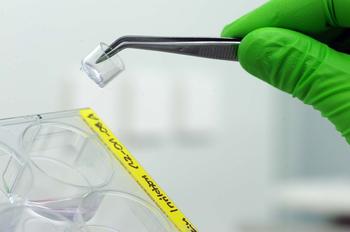Invitrotrain
The objectives of the Invitrotrain project are the development, validation and demonstration of in vitro methods for chemical testing and prediction of toxicity. We aim for the enhancement of the link between scientists in the in vitro field and technology users in the industry. Five practical training courses will cover multiple alternative (non-animal) methods, and general aspects of replacement tests by in vitro procedures for the identification of hazardous properties of chemicals will be addressed. Special focus is placed on the performance of scientifically validated in vitro methods which are accepted in regulatory toxicology and the statistical evaluation of the test results.
The objectives of the Invitrotrain project are in line with the future EU policies on cosmetics and chemicals which call for the use of animal alternatives and new testing strategies.
The project is sponsored by the European Commission (6th Framework Program, Förderung aus dem Europäischen Fond für regionale Entwicklung, No. EFRE 20002006 2/15; from 01. Aug. 2004 to 30. July 2007).
Aims of the project are to
- Organize and perform courses on the theoretical background and practical training of in vitro methods for the identification of toxic chemicals
- Provide the attendees with sufficient experience so that they may apply the techniques to their own needs
- Disseminate the use of in vitro alternative methods
- Develop and/or validate new in vitro alternatives in the field of skin and eye toxicity
Background and rationale
Chemical compounds and preparations have to be assessed for possible human health hazard (Council Directive 67/548/EEC and 88/389/EEC). In vivo tests have been developed and refined with the aim to detect and characterise inherent toxic properties and their dose-effect relationships. The tests have been standardised at an international level within the OECD test Guideline Programme. The acceptance is mandatory for OECD member countries. The tests cover the most important health endpoints for safe handling of chemicals and products and reflect the current state-of-art in hazard identification testing.
According to the Council Directive 86/609/EEC on the protection of animals for experimental and other scientific purposes, OECD guidelines include that an experiment entailing the use of animals shall not be performed if another scientifically satisfactory method is reasonably and practically available to obtain the results sought. In the context of laboratory animal use, “alternatives” include all procedures that completely replace the need for animal experiments, reduce the number of animals required, or diminish the amount of distress or pain suffered by animals in meeting the essential needs of man and other animals (Smyth, 1978). This definition embodies the 3Rs concept proposed by Russel & Burch (1959) and the laws of many countries and Directive 86/609/EEC of the European Union now require that replacement alternatives, reduction alternatives and refinement alternatives should be used whenever possible.
Taking into account this rationale and the increase scientific knowledge in the mechanisms underlying toxic effects, scientist of official control laboratories (ECVAM, ZEBET) evaluated possible in vitro tests for the identification of hazard compounds. A number of scientifically validated test methods are available today which have been integrated into the regulatory test guidelines. However, there is a lack of specific training and continuous exercise to overcome the reluctance to change and expedite the implementation of new test methods.
The Invitrotrain project is initialized in order to overcome this hurdle: Regulatory accepted and/or scientifically validated test methods will be imparted during the training courses. The training courses will cover the use of validated methods in the area of acute skin and eye toxicity, absorption models, reproductive toxicity and ecotoxicology of chemicals.
The theoretical background of each test method will be introduced during seminars and the participants will be instructed to the test performance in laboratory exercise at the bench. General aspects concerning the 3Rs concept will be addressed in the lectures.
